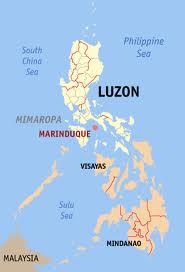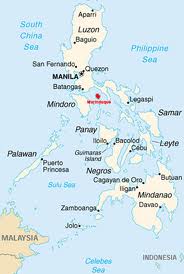
-
МјРЇСІИёСЖШИМі
-
 И№ОЫ КИОЫ Йъ ЗЛЦЎЧЯБт~ ИЎСЖЦЎ ПЙОрБюСі
И№ОЫ КИОЫ Йъ ЗЛЦЎЧЯБт~ ИЎСЖЦЎ ПЙОрБюСі 89,457
89,457 -
 [ЧЪИЎЧЩ ММКЮ] ФЋИ№ХзНК ПЉЧр 100Йш СёБтБт
[ЧЪИЎЧЩ ММКЮ] ФЋИ№ХзНК ПЉЧр 100Йш СёБтБт 48,905
48,905 -
 ИЖДвЖѓ НУГЛ - ИЎРп АјПјСЄКИ. (ЛчСј 16Рх ЦїЧд)
ИЖДвЖѓ НУГЛ - ИЎРп АјПјСЄКИ. (ЛчСј 16Рх ЦїЧд) 30,790
30,790 -
 ММКЮРЧ СіПЊСЄКИ15,529
ММКЮРЧ СіПЊСЄКИ15,529 -
 ИЖДвЖѓ БйБГ - ЕћАЁРЬЕћРЬ ПЉЧр СЄКИ14,341
ИЖДвЖѓ БйБГ - ЕћАЁРЬЕћРЬ ПЉЧр СЄКИ14,341 -
 [ЧЪИЎЧЩ ММКЮ/ИЗХК] ШЃХк МїЙк ПфБн Йз СЄКИ13,319
[ЧЪИЎЧЩ ММКЮ/ИЗХК] ШЃХк МїЙк ПфБн Йз СЄКИ13,319 -
 КИЖѓФЋРЬРЧ И№Еч И№НРРЛ КММі РжДТ ЛчСјУИ.13,132
КИЖѓФЋРЬРЧ И№Еч И№НРРЛ КММі РжДТ ЛчСјУИ.13,132 -
 ИЖДвЖѓ БйБГ - ЦХЛѓЧб ЦјЦї ПЉЧрСЄКИ12,831
ИЖДвЖѓ БйБГ - ЦХЛѓЧб ЦјЦї ПЉЧрСЄКИ12,831 -
 [ММКЮ-ЙшМБТјРх] МБЙкШИЛч РќШЙјШЃПЁПф~12,445
[ММКЮ-ЙшМБТјРх] МБЙкШИЛч РќШЙјШЃПЁПф~12,445 -
 ИЖДвЖѓ СіПЊ(ПЁИЃЙЬХИ -ИЛЖѓХз)РЧ СіЕЕ/ЧбБЙ РННФСЁ/МюЧЮИє12,113
ИЖДвЖѓ СіПЊ(ПЁИЃЙЬХИ -ИЛЖѓХз)РЧ СіЕЕ/ЧбБЙ РННФСЁ/МюЧЮИє12,113
Marinduque Province

Marinduque (Filipino: Marinduke pronounced [mɑrinˈduke]) is an islandprovince of the Philippines located in the MIMAROPA region in Luzon. Its capital is Boac. Marinduque lies between Tayabas Bay to the north and Sibuyan Sea to the south. It is located south and west of Quezon, east of Mindoro, and north of Romblon. The province is sometimes called the Heart of the Philippines, because of its geographical location.
History
Legend has it that the island of Marinduque was formed as a consequence of a tragic love affair between two people: Mariin and Gatduke. Mariin's father, a local chieftain, did not approve of this affair and ordered the beheading of Gatduke. Before this could be done, the couple sailed out to sea and drowned themselves, forming the island now called Marinduque.
During the Spanish and early American occupations, Marinduque was part of Balayan Province (now Batangas) in the 16th century, Mindoro in the 17th century, and had a brief period as an independent province in 1901, when the Americans arrived.
During the Philippine-American War, Marinduque was the first island to have American concentration camps. Marinduque is the site of the Battle of Pulang Lupa, where 250 Filipino soldiers under Colonel Maximo Abad, defeated a smaller force of 54 American Infantrymen.
In 1902, the US-Philippine Commission annexed the islands of Mindoro (now two separate provinces) and Lubang (now part of Occidental Mindoro) to the province.
Four months later, the province became part of the province of Tayabas (now Quezon).
On February 21, 1920, Act 2280 was passed by the Philippine Congress, reestablishing Marinduque as a separate province.
In 1942, the Japanese Imperial forces landed in Marinduque.
In 1945, combined American and Philippine Commonwealth troops attacked from the Japanese Troops liberated to the Battle of Marinduque in the Second World War.

Geography
Marinduque is a heart-shaped island between Tayabas Bay in the north and Sibuyan Sea to the south. It is separated from the Bondoc Peninsula in Quezon by the Mompong Pass. Some of the smaller islands to the northeast are Polo Island, Maniwaya Island, and Mompong Island. The highest peak in Marinduque is Mt. Malindig (formerly called Mt. Marlanga), a potentially active volcano with an elevation of 1,157 metres (3,796 ft).
The island has two major seasons—the dry season (November through February) and the rainy season (June through October), with a transitional period in between.

Culture
- Festivals
- The Moriones festival also plays a prominent role in Marinduque's culture. Marinduque is famous for this annual Moriones Festival locally known as "Moryonan". During the month of March or April, parades and celebrations can be seen on the streets. In Santa Cruz, Gasan, Boac, and Mogpog, a parade of people dressed as "Moryons" can be seen on the main road connecting the towns of the island. Boac and Sta. Cruz, the biggest town in the province, shows a reenactment in the evening of the actual event when Longinus, a blind soldier, punctures Jesus with his spear and blood droplets from the wound restores Longinus' sight.
- Music
- The Marinduque is also home to a musical instrument called the Kalutang. The Kalutang is an instrument made of two pieces of wood that produce different note ranges depending on its size. A band of 10 to 12 can create music with this instrument.
Language
The version of Tagalog spoken in Marinduque has been described as "the root from which modern national forms of speech have sprung," where remnants of archaic Tagalog could be found, spoken in a lilting manner by its inhabitants. If this linguistic theory is accurate, Marinduque's Tagalog has contributed significantly to the development of the official Philippine national language.
To this day, Marinduqueños speak an old variation of the Tagalog language that is very close to the way Tagalog was spoken before the Spanish colonization. According to language experts, the Tagalog dialects of Marinduque are the most divergent, especially the Eastern Marinduque dialect, perhaps due to the relative isolation from the Tagalogs of Luzon and also perhaps due to the influence of the Visayan and Bikol migrants.
Linguist Rosa Soberano's 1980 The Dialects of Marinduque Tagalog goes into great depth concerning the dialects spoken there.
- ЁЄ
- ЁЄ
- ЁЄ
- ЁЄryWvMVxeet
- ЁЄryWvMVxeet
- ЁЄryWvMVxeet\'\"\\(
- ЁЄryWvMVxeetщ\'\"\\(
- ЁЄryWvMVxeet
- ЁЄryWvMVxeet
- ЁЄryWvMVxeet
- ЁЄryWvMVxeet
- ЁЄryWvMVxeet
- ЁЄryWvMVxeet
- ЁЄryWvMVxeet
- ЁЄryWvMVxeet















 ЧЪРкДхФФ ОпАЃЛѓДу ПРЧТ
ЧЪРкДхФФ ОпАЃЛѓДу ПРЧТ 12ГтПЌМг МвКёРкИИСЗ 1РЇ
12ГтПЌМг МвКёРкИИСЗ 1РЇ
 ГЛАд ИТДТ ОюЧаПј УЃБт
ГЛАд ИТДТ ОюЧаПј УЃБт
 ИЎОѓ ЧаБГ ЙцЙЎБт
ИЎОѓ ЧаБГ ЙцЙЎБт
 СжИЛПЁ ГЛАЁ ОЕ КёПыРК?
СжИЛПЁ ГЛАЁ ОЕ КёПыРК? УжАэАЁМККё РЬКЅЦЎ СёБтБт
УжАэАЁМККё РЬКЅЦЎ СёБтБт
 ЧіСіПЁМЕЕ ЧЪРкДхФФ!
ЧіСіПЁМЕЕ ЧЪРкДхФФ! ЧіСіПЁМ АЁДЩЧб
ЧіСіПЁМ АЁДЩЧб









 ЧЪРк ЦЏБо Ч§ХУ! ФСНУОюСі МКёНК
ЧЪРк ЦЏБо Ч§ХУ! ФСНУОюСі МКёНК
































